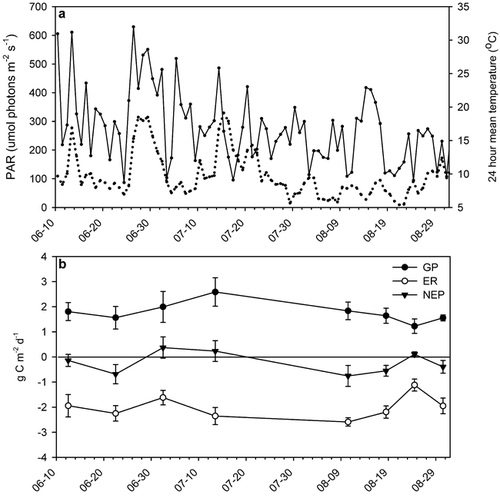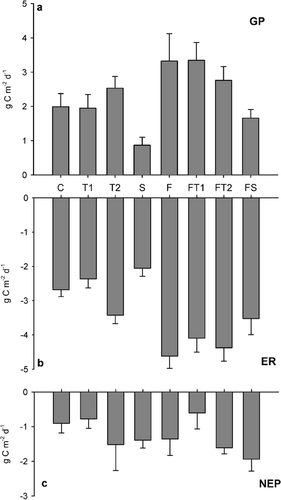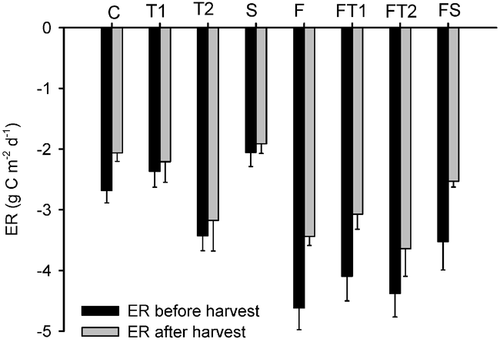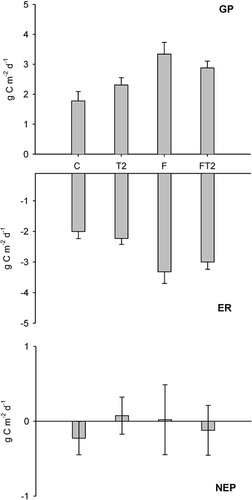Figures & data
FIGURE 1. (a) Photosynthetically active radiation (PAR, solid line) and air temperature (dotted line) during the flux measurements in 1998. (b) Gross ecosystem production (GP), ecosystem respiration (ER), and net ecosystem production (NEP) at control plots in 1998. The points on the curves are calculated as running means of three consecutive measurements during the three cycles of the diurnal measurement. They are only used for illustration of the change in fluxes and not for other calculations. The broken lines show the approximate light compensation point and the zero-line for carbon flux in a and b, respectively

FIGURE 2. (a) Photosynthetically active radiation (PAR, solid line) and air temperature (dotted line) during the flux measurements in 1999. (b) Gross ecosystem production (GP), ecosystem respiration (ER), and net ecosystem production (NEP) at control plots in 1999

FIGURE 3. Integrated diurnal 1998 mid summer (a) gross ecosystem production (GP), (b) ecosystem respiration (ER), and (c) net ecosystem production (NEP). Data are means ± S.E. of six measurements. Treatments are: C–control, T1–low temperature enhancement, T2–high temperature enhancement, S–shading, F–fertilizer addition

FIGURE 4. Integrated diurnal ecosystem respiration (ER, means ± S.E., n = 6) before (black bars) and after (gray bars) harvest of the aboveground plant biomass. Treatments are: C–control, T1–low temperature enhancement, T2–high temperature enhancement, S–shading, F–fertilizer addition

FIGURE 5. Mean seasonal 1999 gross ecosystem production (GP), ecosystem respiration (ER), and net ecosystem production (NEP). Data are seasonal means based on 8 d of measurement ± S.E. (n = 6). Treatments are: C–control, T2–high temperature enhancement, F–fertilizer addition

TABLE 1 ANOVAs on diurnal mid-summer CO2 fluxes in 1998 with total plant biomass as covariate. The degrees of freedom (d.f.) of the error-term are 35. Tests without biomass included as covariate gave similar statistical significance of main effects and interactions, except that there were no significant temperature and temperature × fertilizer effect on ER
TABLE 2 Repeated measures ANOVAs on seasonal CO2 fluxes in 1999 with total plant biomass as covariate. The degrees of freedom (d.f.) of the error-term are 35